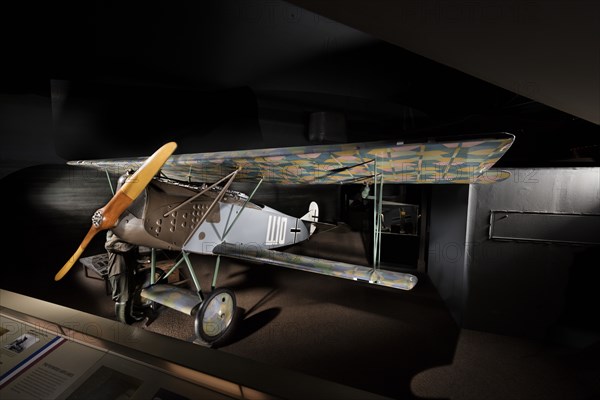
Sujet
Fokker D.VII, 1918. Creator: Ostdeutsche Albatros Werke GmbH.
Légende
Single-engine, single-seat, German World War I biplane fighter; 160-horsepower Mercedes D.IIIa water-cooled engine. Lozenge camouflage on wings. Fuselage gray and olive drab. In response to the loss of air superiority in late 1917, the Germans organized a competition for new fighter designs held in January 1918. The in-line engine winner was the Fokker D.VII. Fokker received an order for 400 aircraft. To meet the demand for the new fighter, Albatros, Fokker's chief competitor, also built the D.VII under license. Ironically, Albatros built more D.VIIs than the primary contractor and the Albatros product was of higher quality. When the Fokker D.VII appeared on the Western Front in April 1918, Allied pilots at first underestimated the new fighter because of its squarish, ungainly appearance, but quickly revised their view. The D.VII's unique ability to seemingly "hang on its propeller," and fire into the unprotected underside of enemy aircraft made it a highly feared combat opponent. The Armistice agreement requirement specifically demanding that all Fokker D.VIIs be immediately surrendered attested to the general high regard for the airplane.
Crédit
Photo12/Heritage Images/Heritage Art
Notre référence
HRM21A87_478
Model release
NA
Property release
NA
Licence
Droits gérés
Format disponible
144,0Mo (3,9Mo) / 73,6cm x 49,0cm / 8688 x 5792 (300dpi)